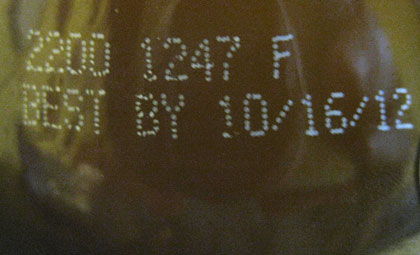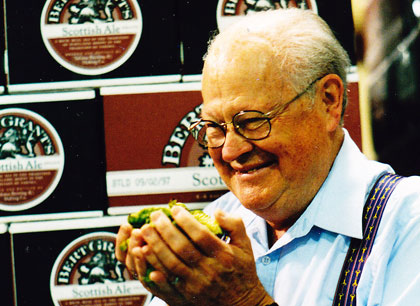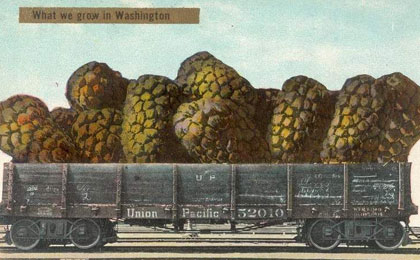
You might have heard that Stone Brewing released a beer called Stone Enjoy By 09.21.12 IPA in the last few days ago. (That’s not the date on the bottle above, and we will get to that right after explaining what Stone is doing.)
Stone released 09.21.12 only in Chicago, New Jersey and Southern California, and come Sept. 21 (also a Friday) “if any beer remains on the shelf it will be immediately removed.” A press release calls this a “35-day package-to-drink cycle.” Most Stone beers list a shelf life of 90 days, some longer.
Stone head brewer Mitch Steele talks about brewing the beer, the hop additions, and the hops used as well as the volatile nature of hop aroma in this Double IPA in this video from Stone.
Of course other beers dosed with large amounts of late hops — at or near the end of boiling, then in dry hopping — are just as fragile. (Yes, I just use IPA and fragile in the same sentence.)
Research at Sierra Nevada Brewing has determined the levels of the compounds that produce those floral, spicy, etc. aromas that have made highly hopped beers so popular drop dramatically the first three days after bottling. They migrate from the liquid to the head space to the liner of the bottle cap, and perhaps eventually into the atmosphere. After three days an “average” IPA might contain the same level of myrcene, for instance, as a pale ale immediately after bottling. How fast the aroma continues to fade in the following weeks depends on many factors, including storage temperature and the amount beer is agitated in shipping.
Just another way that American IPAs are different than the historic India Pale Ales that presumably continued to improve, at least up to a point, during a long boat ride.
The bottle at the top is Boulevard Brewing’s new 80-Acre Hoppy Wheat Beer.1
What struck me as I poured a bottle into a glass last week was, first, that the hop2 aroma (fresh citrus, like buying pineapples fresh where they are grown) jumps from the glass when it still two feet from your nose — but, then, the “best by” date, only a little more than two months off. This on a bottle just released. That’s a short lease.
Turns out that Boulevard does not plan to continue to keep the date Stone-short (a new phrase that makes sense only within the context of this post). Julie Weeks at Boulevard emailed this explanation from brewmaster Steven Pauwels:
“When we introduce a new beer we want to make sure that the customer has a chance to taste the beer the first time at its optimum. Any new beer in our heritage line-up gets short coded during the launch-phase to make sure the consumer gets to taste it as fresh as possible.
“During the development phase we work a lot on stability and come up with best by date that we confirm with real life data when the beer gets to market.”
I will continue to seek out this beer as fresh as I can get it, and I hope on tap. It’s 5.4% ABV, so not officially a “session beer” but one you can have a few of during the course of a Saturday afternoon watching college football. And there’s a lot more hop going on than the 20 IBUs would suggest (Blue Moon White has 18 IBUs, Fat Tire 19 IBUs), a reminder that hops are about a lot more than bitterness.
Which, of course, is the point of Stone Enjoy By 09.21.12 IPA.
****
1 Extra credit if when you saw the beer name the first time you thought of James McMurtry’s “60 Acres.”
2 If you can keep up with Jeremy Danner on Twitter you know “Bittering is a blend of CTZ, Bravo, & Summit. Cascade in the whirlpool and Cascade and Nelson (Sauvin) for dry hops.”


